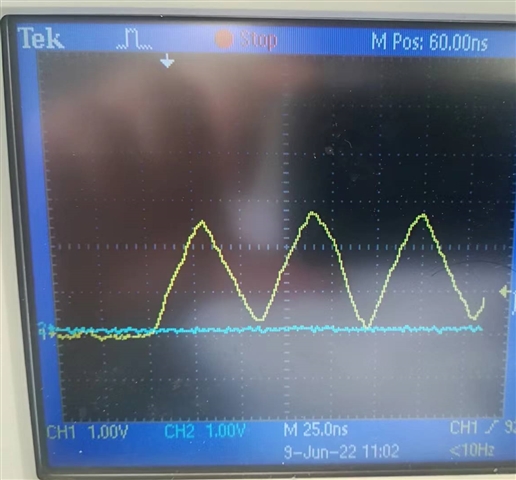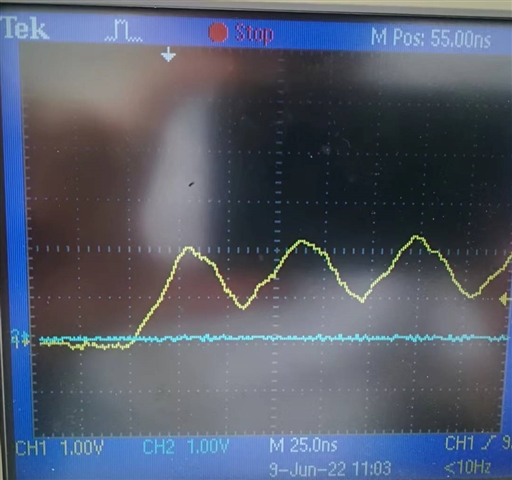Other Parts Discussed in Thread: TMUX1574, SN74CB3Q3251
There are ASIC chips with SPI master. We choose one specific ASIC chip with CD74HC4067 MUX. The CLK signal is OK at the master side; however, the signal is distorted after passing CD74HC4067 MUX. Since the CLK signal is not OK, the SPI communication cannot work properly. We wonder how to fix the problem. Thanks.
The connection is as following:
SPI's CLK (Master) ----> CD74HC4067 MUX ----> FT2232HQ (USB Hi-Speed to Dual Channel Serial UART/FIFO/JTAG/SPI/I2C IC)
The CLK signal at Master side:

The CLK signal passed the CD74HC4067 MUX


